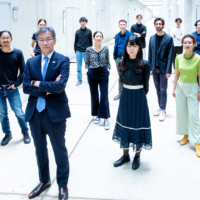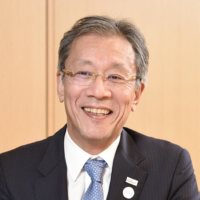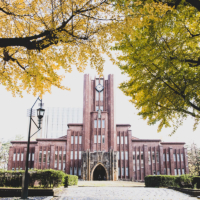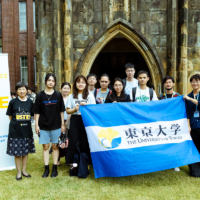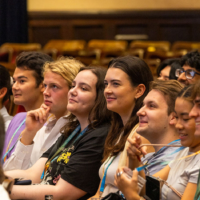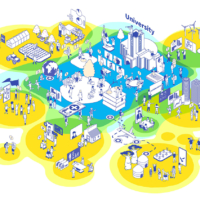By its 150th anniversary in 2027, Japan’s oldest national university intends to have built a brand-new interdisciplinary institute and invite the brightest undergraduates from around the world to come and design the future from Tokyo. University of Tokyo President Teruo Fujii says the envisioned College of Design will foster an end-user scholarship based not on what the faculty wants to teach, but on what the students want to learn.
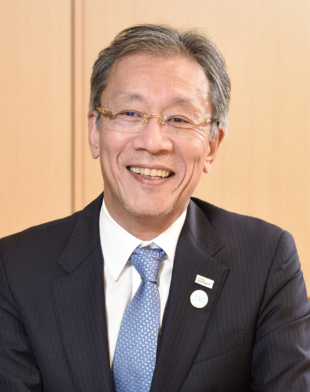
“We are at a point now where a perspective change is necessary. Many systems or public services developed in the 20th century were essentially done so from the point of view of suppliers; the general idea was that if people bought whatever was mass-produced or manufactured, then everything was fine. Now, however, as we’ve seen from a lot of big tech companies, it is important to have an end product that is as close as possible to what the users want. It is equally important in other areas, such as education or medical care or public service, to provide service that matches student, patient or citizen needs. The terminology that captures that overarching concept is ‘design,’” Fujii explained.
No entrance exams?
The administration of the College of Design will also depart from the usual. It will forgo entrance exams typical of Japanese universities and instead have an admissions system based on applications to attract talented students of diverse backgrounds from all over the world. In addition, to align the school year with that of the overseas institutions from which it is hoping to attract what the president calls “future shapers,” classes will start in the fall, not April as is customary in Japan.
Hoping to start with 100 core students and additional “affiliate” students, the college’s English-taught curriculum will have a strong focus on global issues. Pressing issues such as sustainability require a practical set of solutions, and the students aiming to formulate those solutions will have varied interests and values as well, Fujii said.
“There is technology-driven sustainability, but what kind of economic system should be developed to encourage people to think about and act on sustainability? I think there is a lot of interest in that kind of solution,” he said. “Some of today’s students may want to work for international organizations, while others may want to go to a manufacturer and work in the field of technology, and of course there are those who want to work in science, climatology, and so on.”
Creative autonomy
Though the future College of Design’s row of towers will stand tall on the university’s Hongo Campus in the middle of the metropolis, it is only one aspect of the president’s plan to bolster the university’s capacity and offerings so that it simply becomes a place that people want to join. Fujii, who took office in 2021, has released a new set of guiding principles and ideals called UTokyo Compass. Its theme: “Into a Sea of Diversity: Creating the Future through Dialogue.”
“I intend for UTokyo Compass to be a call for everyone at UTokyo to build a common vision for our university and to ensure that we make steady progress along a shared course over the coming decades, all the while earning the understanding of the university community and of our stakeholders in society,” Fujii said in a booklet explaining the principles.
UTokyo Compass has 20 goals outlined under four pillars, including Establishing Management Capacity for Autonomous and Creative Activity. The president is putting forward a new model of university administration that is not based primarily on government subsidies, but on independent fundraising. For this to happen, it is necessary to build groundbreaking research and business partnerships.

“In order for the university to truly fulfill its role on a global scale, a significant number of resources are necessary. Research and other activities generated by the university create a lot of value, and we need to make that value widely understood by people outside the university. If these different sectors agree with and support our objectives and activities, they will make resources available to us for further work. We can then use those donations for the next set of activities. If we can create such a virtuous cycle, then the university can, for example, have an endowment fund, from which we can invest in the markets, and use the earnings to carry out the next activity, and so on. This is possible now because various legal restrictions on what national universities could do have been gradually lifted. So the government is also supporting this move toward universities themselves managing their operations in a manner they determine, and generating their own resources. This is what we mean by being autonomous in building capacity for creative activity,” Fujii said.
Educating global students
This April, the university launched the Center for Global Education as one part of its drive to cultivate dialogue across borders and offer students a global education. The center, dubbed GlobE, features English-medium courses named Global Liberal Arts Courses that are focused on the U.N. sustainable development goals and offered to juniors and seniors as well as to graduate students. On its website, the center says its aim is “to offer robust support for the internationalization of all students from the time of their entry to graduation.” Fujii said GlobE intends to eventually increase the GLA program’s current 30 courses to 75. At the same time, attesting to the university’s commitment to diversity, 70% of its teaching faculty are non-Japanese.

“Globalization of education is also important. About 30% of our graduate students are international students, but the number of international undergraduates is quite small, around 2%. One of the reasons for that is that there weren’t many classes they could take in English. We already had a number of faculty who had been teaching active-learning English-language classes with a focus on critical thinking, research or presentation skills, or topics related to their fields of specialization. We, therefore, decided to create new courses related to the SDGs, where our faculty would actually teach in English,” Fujii said.
In addition to GLA courses for registered students, Global Unit Courses, a set of English-taught summer courses offered to undergraduates from anywhere in the world, has been developed. These include in-person and online courses on topics ranging from artificial intelligence and advanced technologies to capitalism and writings about Japan and are already attracting a significant number of students. Basic to advanced Japanese-language courses are also offered.
Planetary health pledge
To an onlooker, UTokyo’s pioneering stance might seem only natural. After all, it was the first national university in Japan and remains among the most prestigious and best-known. Its graduates have become Nobel laureates, prime ministers and business leaders, as well as influential artists and critics. It was founded in 1877 through the restructuring and consolidation of Tokyo Kaisei School (originally the Institute for Western Studies) and Tokyo Medical School, which were established in the two previous decades. Today, the university’s 10 faculties, 15 graduate schools and numerous research institutes are spread across its three core campuses, in Hongo, Komaba and Kashiwa, and elsewhere in Japan.
To continue carrying out its responsibility to create value, the university has been forging partnerships with the world’s leading research institutes, corporations, start-ups and universities. Most recently, it signed a letter of intent with France’s Institut Pasteur to build a Japan-based research counterpart that will include the Planetary Health Innovation Center, which is expected to strengthen international collaboration in a wide range of fields such as global health and life sciences.
The University of Tokyo’s engagement with the emerging field of planetary health, which tackles the effects of human interaction with the Earth, is also evident in its 100-year tie-up with East Japan Railway Co. (JR East). Under the agreement, the university will use JR East’s stations and facilities essentially as laboratories for creating future lifestyles. The collaborative creation project, called the Planetary Health Design Laboratory (PHD Lab.), will aim to realize a fulfilled life for every individual. The UTokyo Gateway Campus, a cutting-edge facility that will be built in Takanawa Gateway City, will function as a base for the PHD Lab.
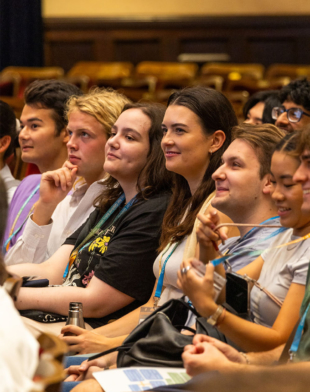
“In June 2022, I took part in an international meeting called Stockholm+50 (so named as it took place 50 years after the first U.N. environmental conference in Stockholm.) It was the first opportunity to make me realize the need to think seriously about ‘planetary health,’” Fujii said.
“In 1972, the first environmental conference of the United Nations was held in Stockholm. The theme at that time was the human environment. Last year’s theme was planetary health. Today, we are thinking about issues such as sustainability, climate change and biodiversity, which concern the health of the Earth. We’ve also experienced a pandemic, which concerns human health, and we have to remember that various living creatures are on the Earth as well. Therefore, we need to think about the health of the entire planet. So when it comes to considering how we can carry on our duty for the next 150 years, planetary health is very important.”
Pressing issues
Apart from creating facilities to strengthen its own research capacity, UTokyo has contributed to advancing research in such fields as quantum computing and semiconductor technologies. The University of Tokyo acts as an entry point or hub, facilitating the work of various companies and universities on cutting-edge technologies with internationally leading companies, including IBM and Taiwan Semiconductor Manufacturing Co.
As it moves toward another 150 years of excellence, the university remains bound to a multifaceted role that extends beyond the borders of classroom or nation. Participating in the global conversation on the use of AI is, therefore, necessary. AI House Davos is a platform that will bring together industry, academia and government for this dialogue, and UTokyo has a seat at the table. In addition, significant numbers of researchers from the university are participating in the discussions regarding the G7-led Hiroshima AI Process, an effort toward developing a framework for the development and use of generative AI.
“To further contribute to the development of AI research and the realization of a better world, the Institute for AI and Beyond, a collaborative initiative by the University of Tokyo and SoftBank, is advancing AI research and pioneering new sciences and businesses while pursuing solutions for AI-related social problems,” Fujii said in a press release on the matter.
The president also hopes to increase opportunities for students to interact with global leaders on a regular basis. In the past year, leaders such as former Unilever CEO Paul Polman, Stanford University President Emeritus and Alphabet Inc. Chairman John Hennessy, and World Trade Organization Director-General Ngozi Okonjo-Iweala have had sessions at the university. Beyond interactive sessions, the university is aiming to create social entrepreneurship ties with developing nations to find collaborative solutions to the issues facing the world.
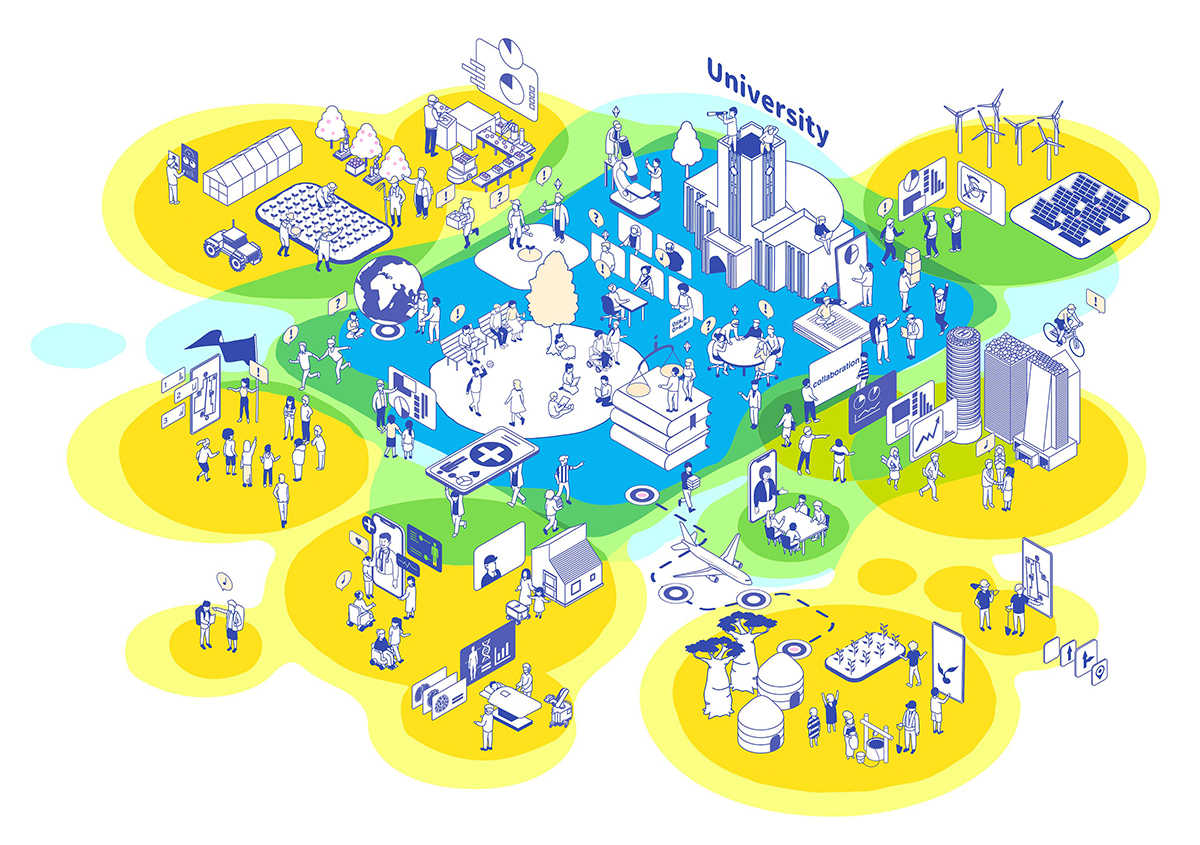
Designed future ahead
In its season of celebrating 150 years, the University of Tokyo can look back on a past that has established it as nothing less than a pillar of the Japanese nation, and forward to a future with challenges both inside and outside its walls. However, in a proactive and inclusive approach that forms its foundation, the university is taking steps to ensure that a future that benefits all humankind is designed there.
This page is sponsored by the University of Tokyo.
The University of Tokyo
Address: 7-3-1 Hongo, Bunkyo-ku, Tokyo 113-8654, Japan
Tel: +81-3-3811-3393
E-mail: [email protected]
URL: https://www.u-tokyo.ac.jp/en/index.html




